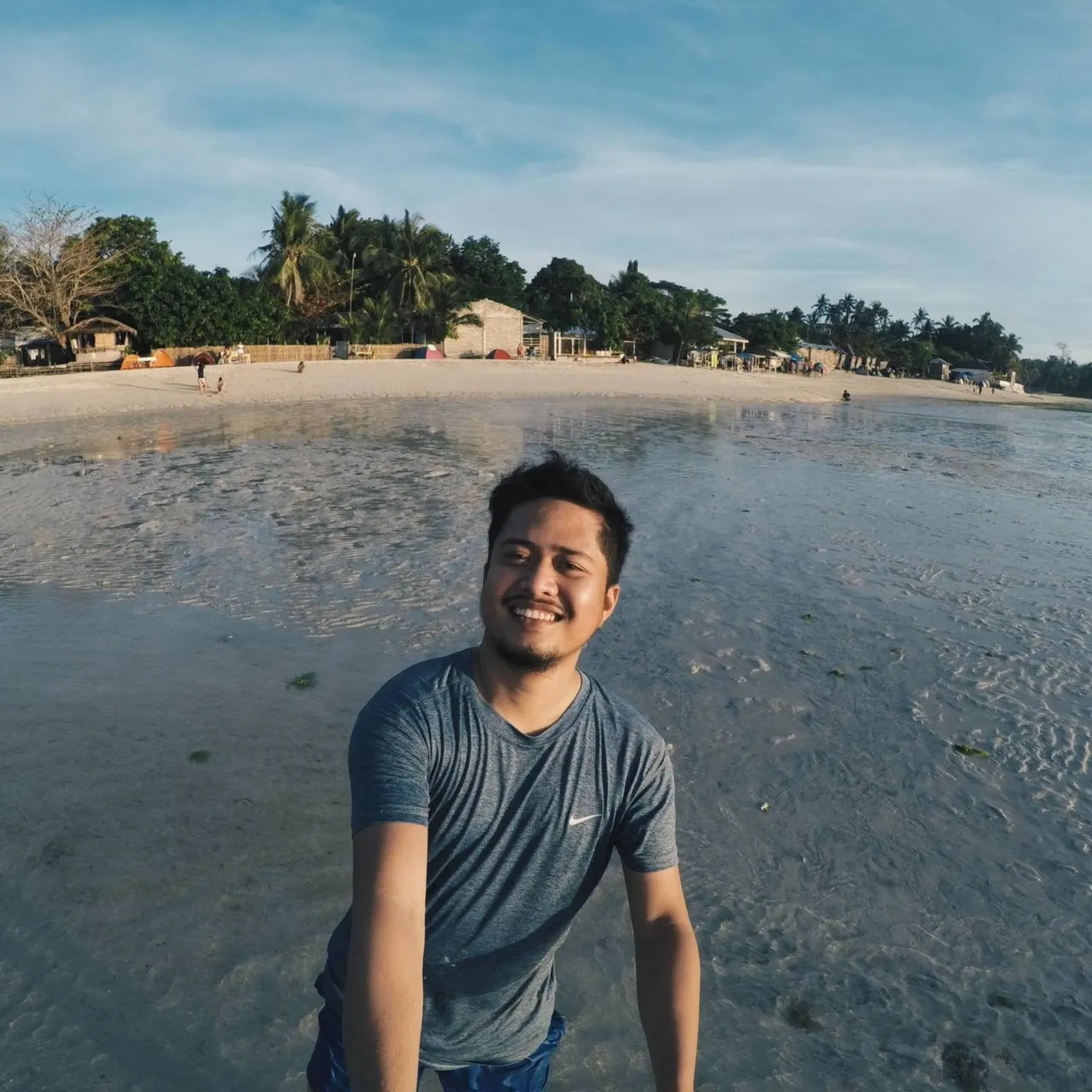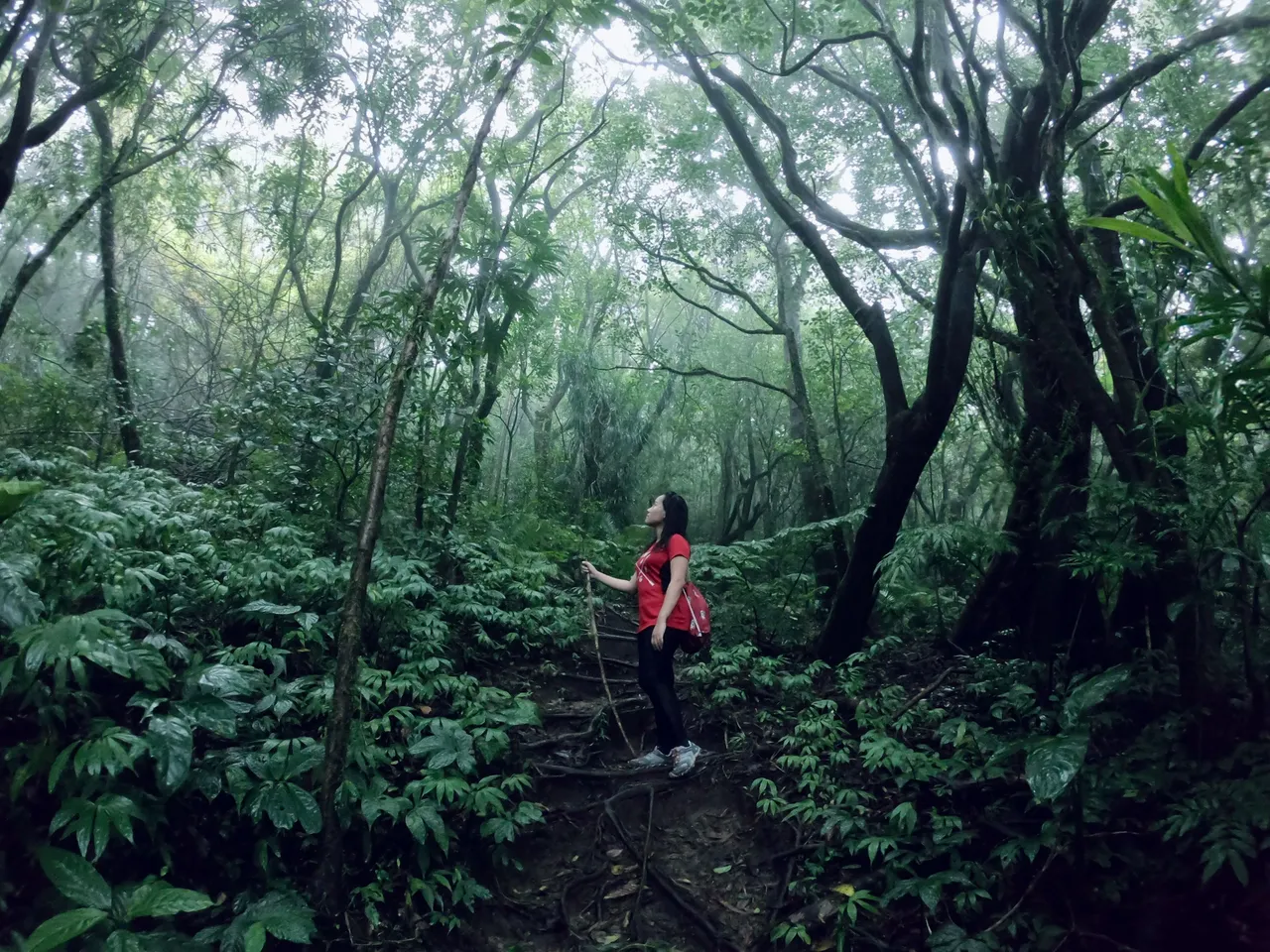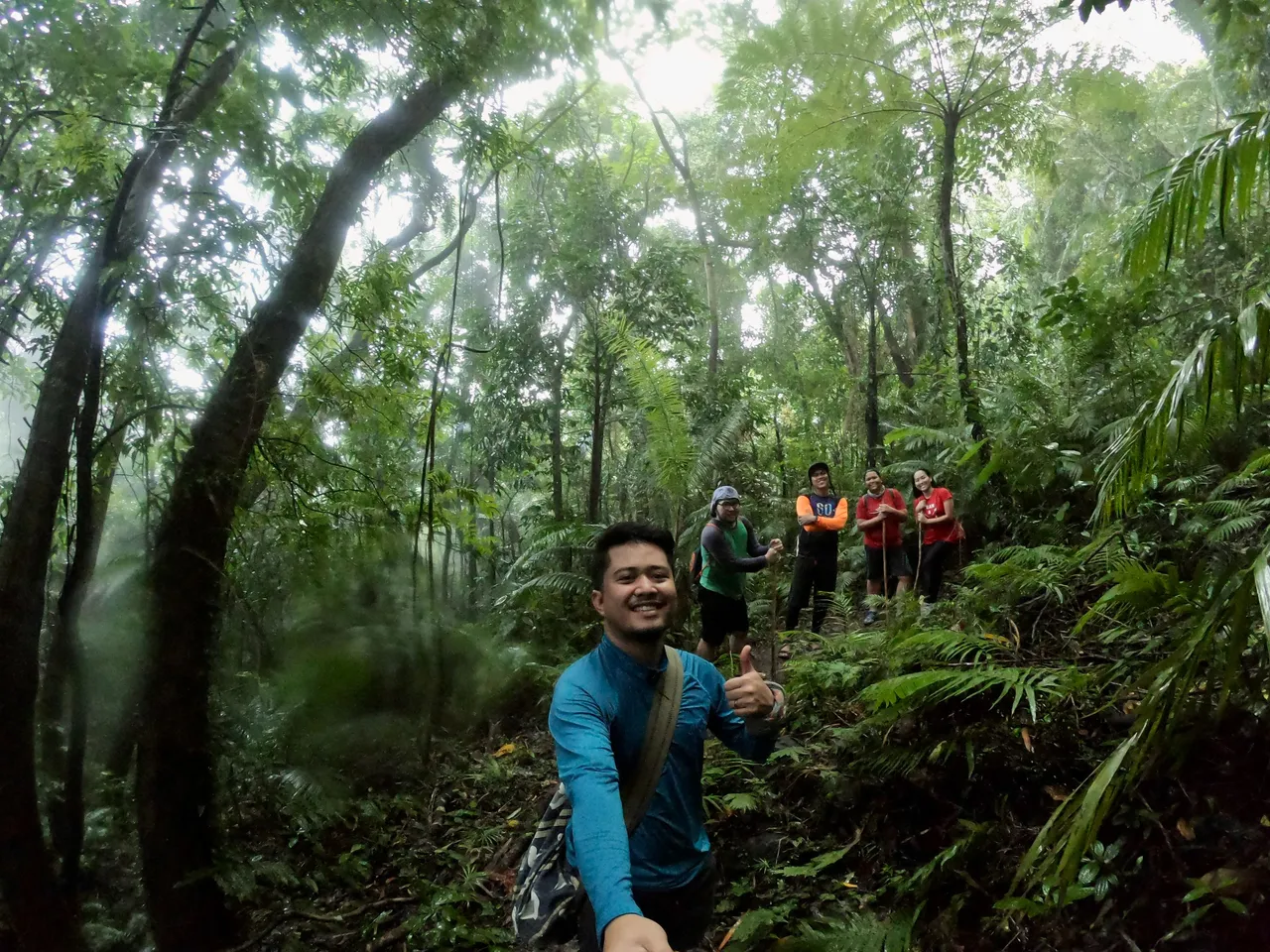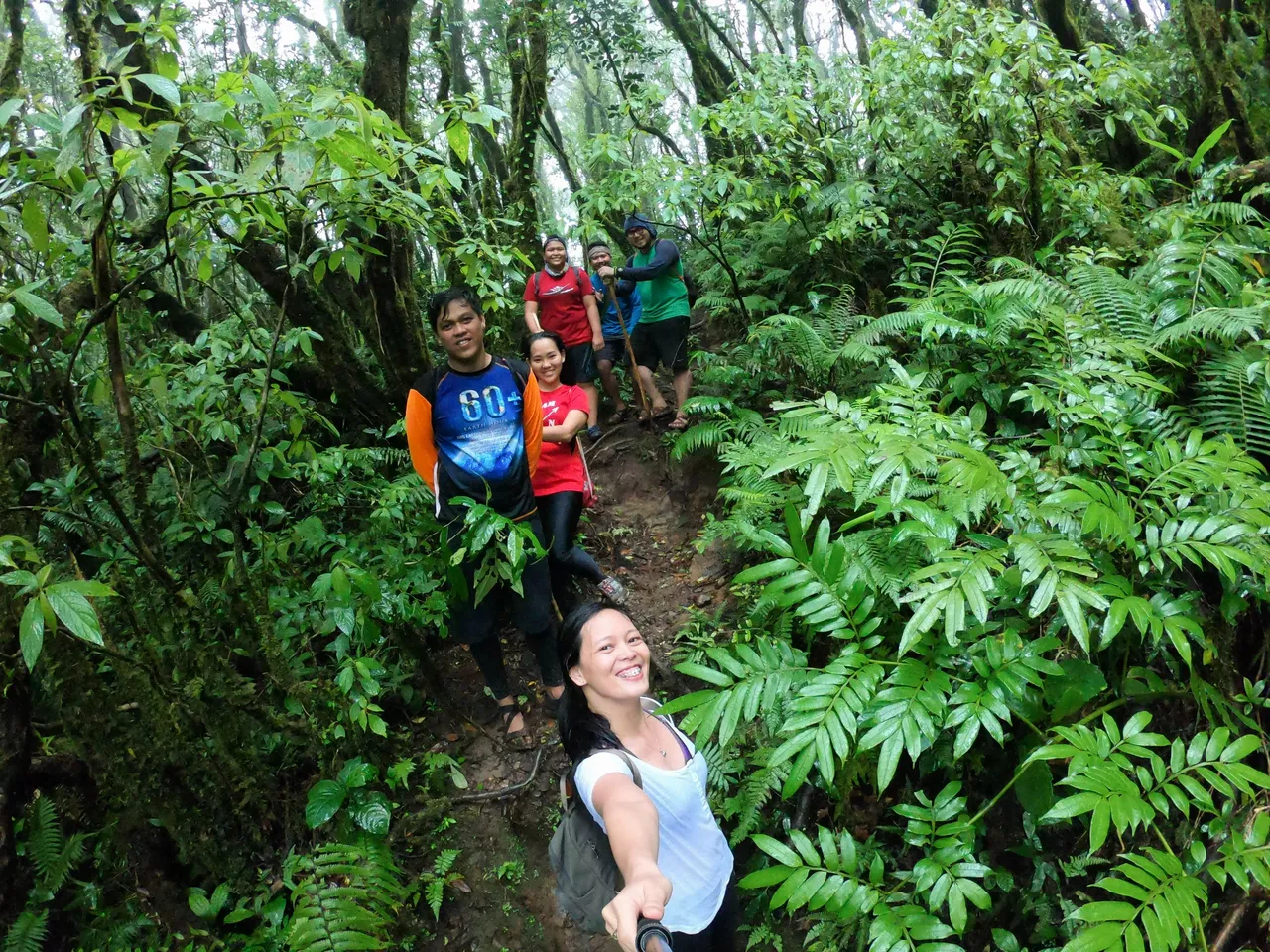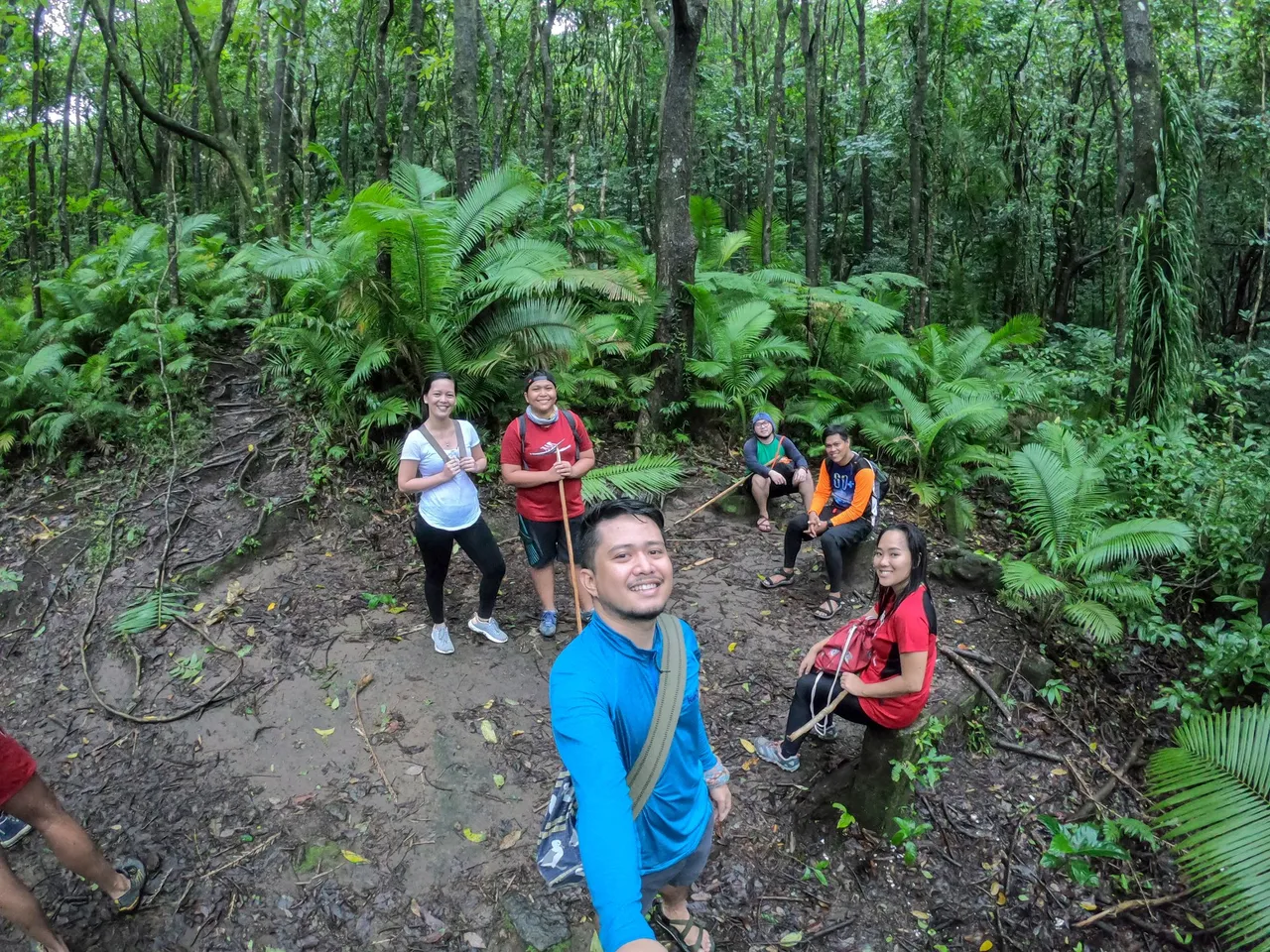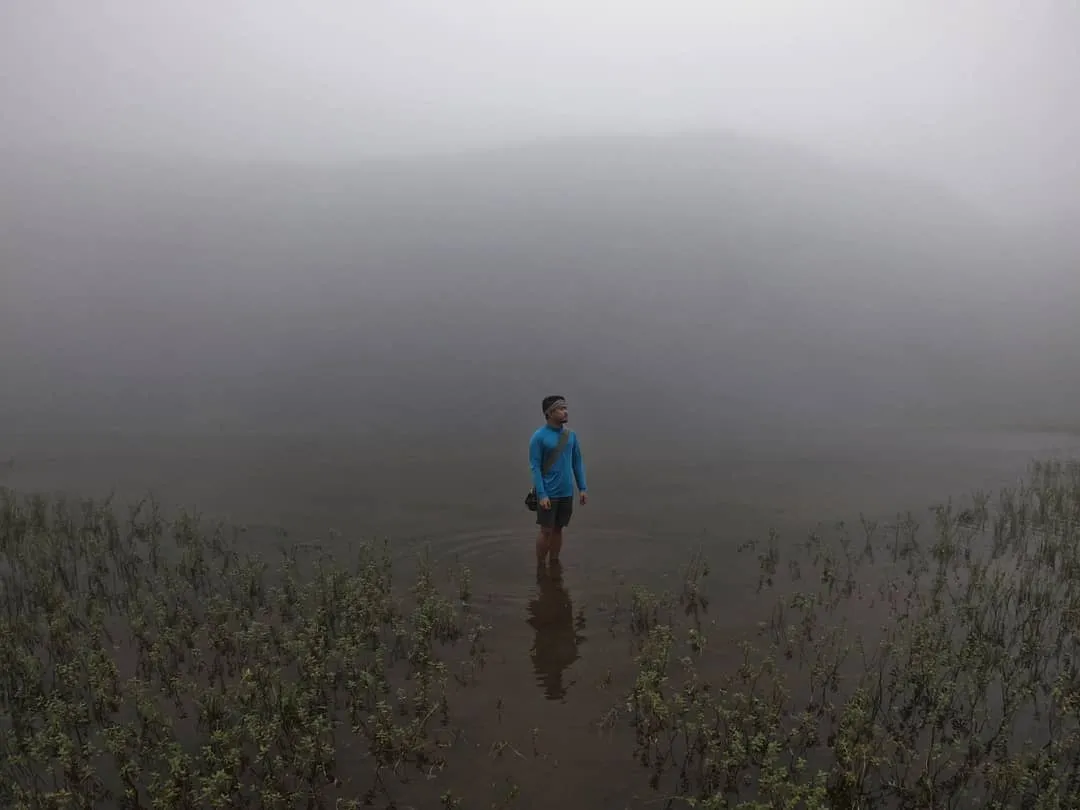On the first part of our adventure, we had some amazing experiences on our first day in Camiguin. If you haven't read my first blog about Camiguin, here is the link >> Camiguin Part 1: A Journey to the Island Born of Fire.
We started our 2nd day on the island early in the morning. We were planning to hike one of the island's active volcanoes, Mt. Hibok-hibok. We had already contacted a local guide to guide us through the trail going to the summit.
We woke up at 5:00 AM and prepared the things that we were going to bring on the hike. The weather was generally dull and uninspiring, but we still pushed through with our hike. We did not bring any jackets on the trip because we did not expect this kind of weather, so good luck to us.
Mt. Hibok-hibok
Mt. Hibok-hibok, also known as Catarman Volcano, has its summit at an elevation of 1,332 meters (4,370 feet) above sea level. The eruption in the 1800s destroyed the town of Catarman, resulting in the sinking of the famous Sunken Cemetery and the Gui-ob Church Ruins.

It is one of the most active volcanoes in the Philippines and has erupted several times in the past century, with the most recent eruption occurring in 1953. The mountain is a popular destination for hikers and mountaineers due to its challenging terrain and stunning views of the surrounding landscape. Despite its active status, it is considered safe for hiking as long as proper precautions and safety measures are taken. The ascent to the summit usually takes around 4-5 hours and offers a variety of landscapes, from dense forest to rocky terrain. At the summit, hikers can enjoy panoramic views of the island and the nearby sea.
We had just started ascending when two of my casual hiking friends began overthinking that they might not be able to do it. As the sweeper of the trail, we stopped for a minute and tried convincing the two to push through because I knew they could do it; they were just overthinking it.
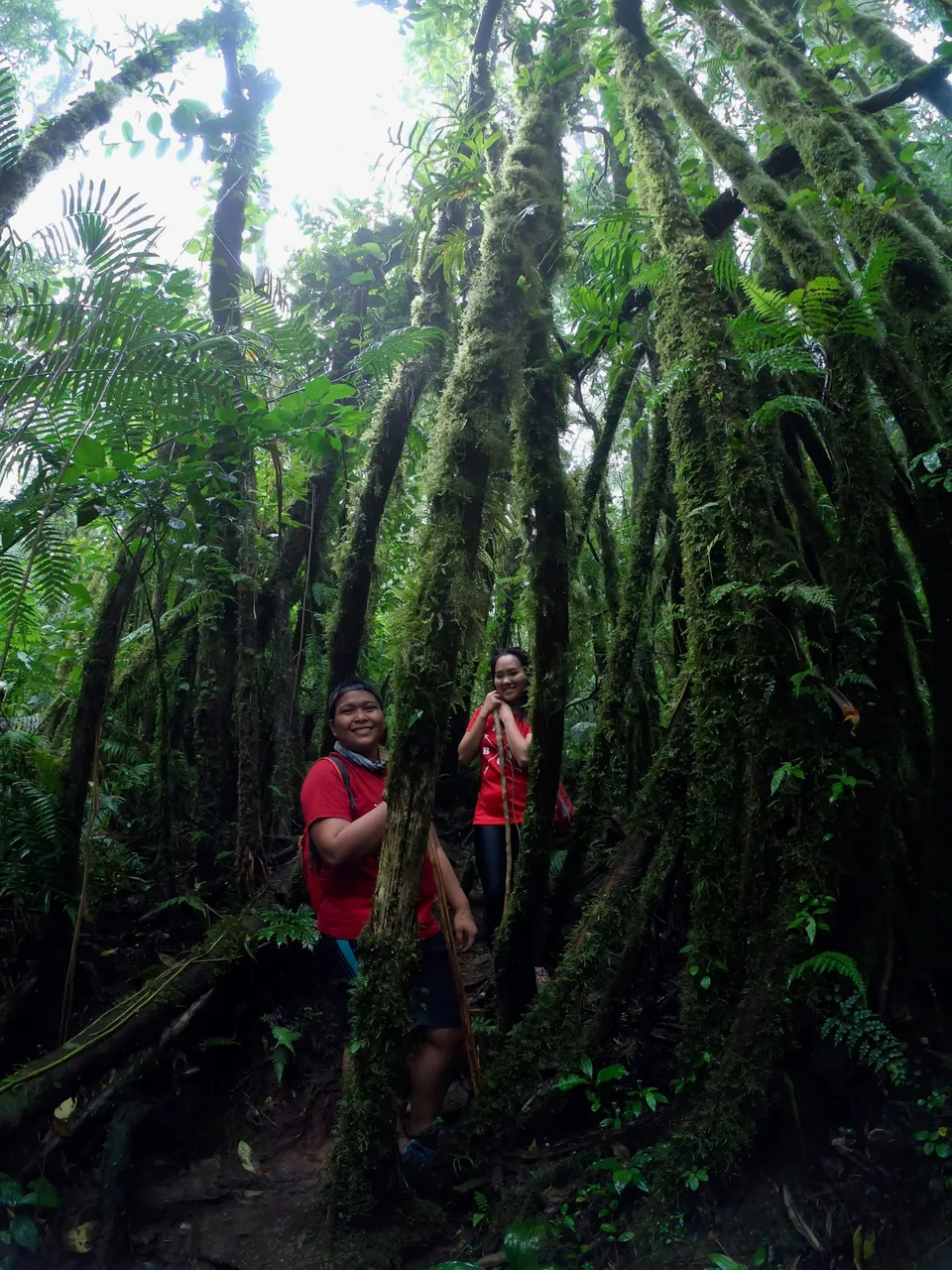
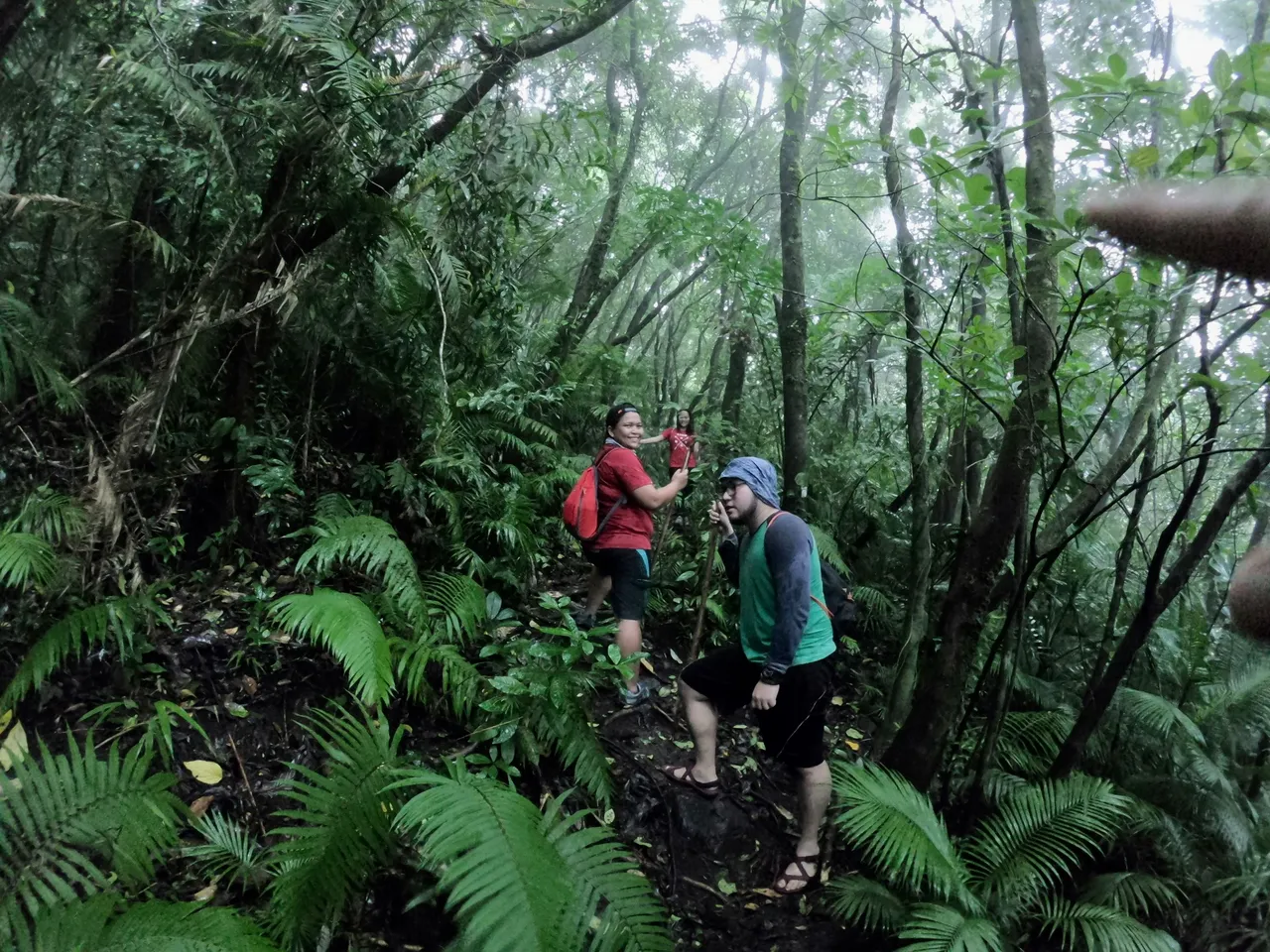

After minutes of negotiating, we decided to take a slow pace going up, although it was not that difficult, or at least for me. We passed through a mossy forest near the mouth of the crater, and it started drizzling. I did not bring a waterproof bag or jackets, so it was extra cold.
|
|
|
|---|---|
|
|
|
We kept walking to keep our bodies warm. The wet trail added a little difficulty to the trail; it was muddy and slippery. The trail was extra moody at that time, seeming like a killer from Wrong Turn or a ghost might show up any time soon.
Despite the drama during the start of the ascent, we arrived at the crater around 8:00 AM safe and sound.
Mt. Hibok-hibok Crater Lake
Mt. Hibok-hibok Crater Lake has a stunning body of water nestled inside the volcano's summit crater. Prior to its eruption in the 1950s, sulfur was mined at the crater.
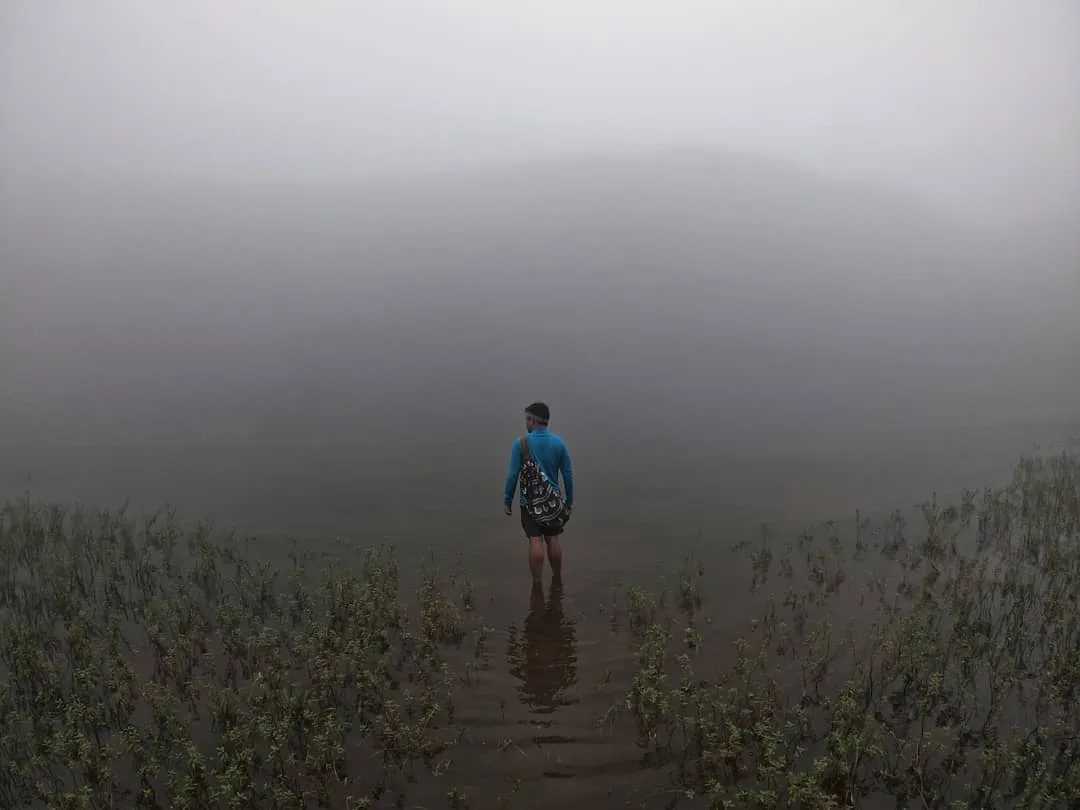
|
|
|
|---|
The thought that you are standing in a crater where once lava flowed is kind of scary. The crater formed when lava hardened into bowl shapes and eventually filled with water and formed shallow lakes.
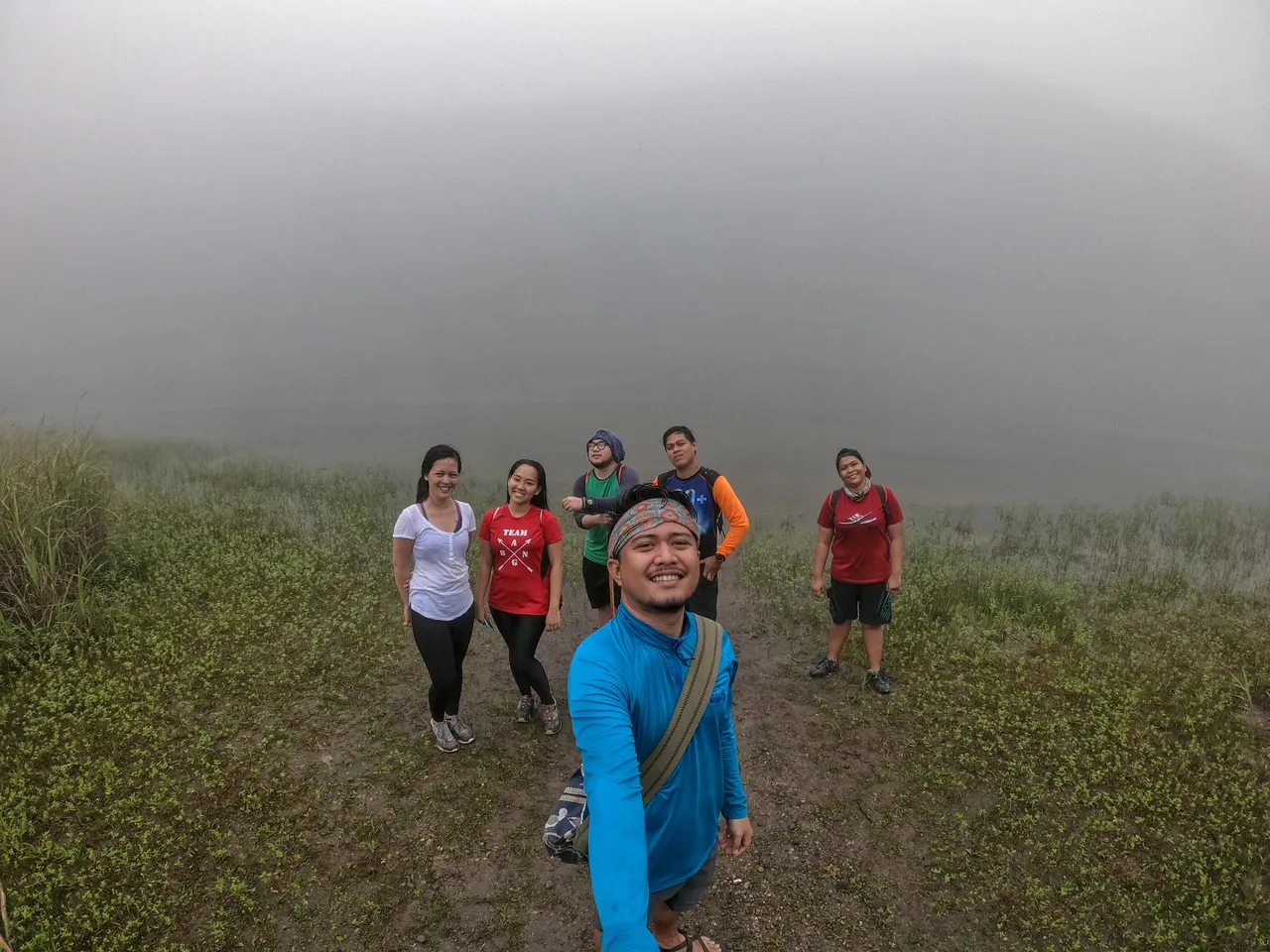
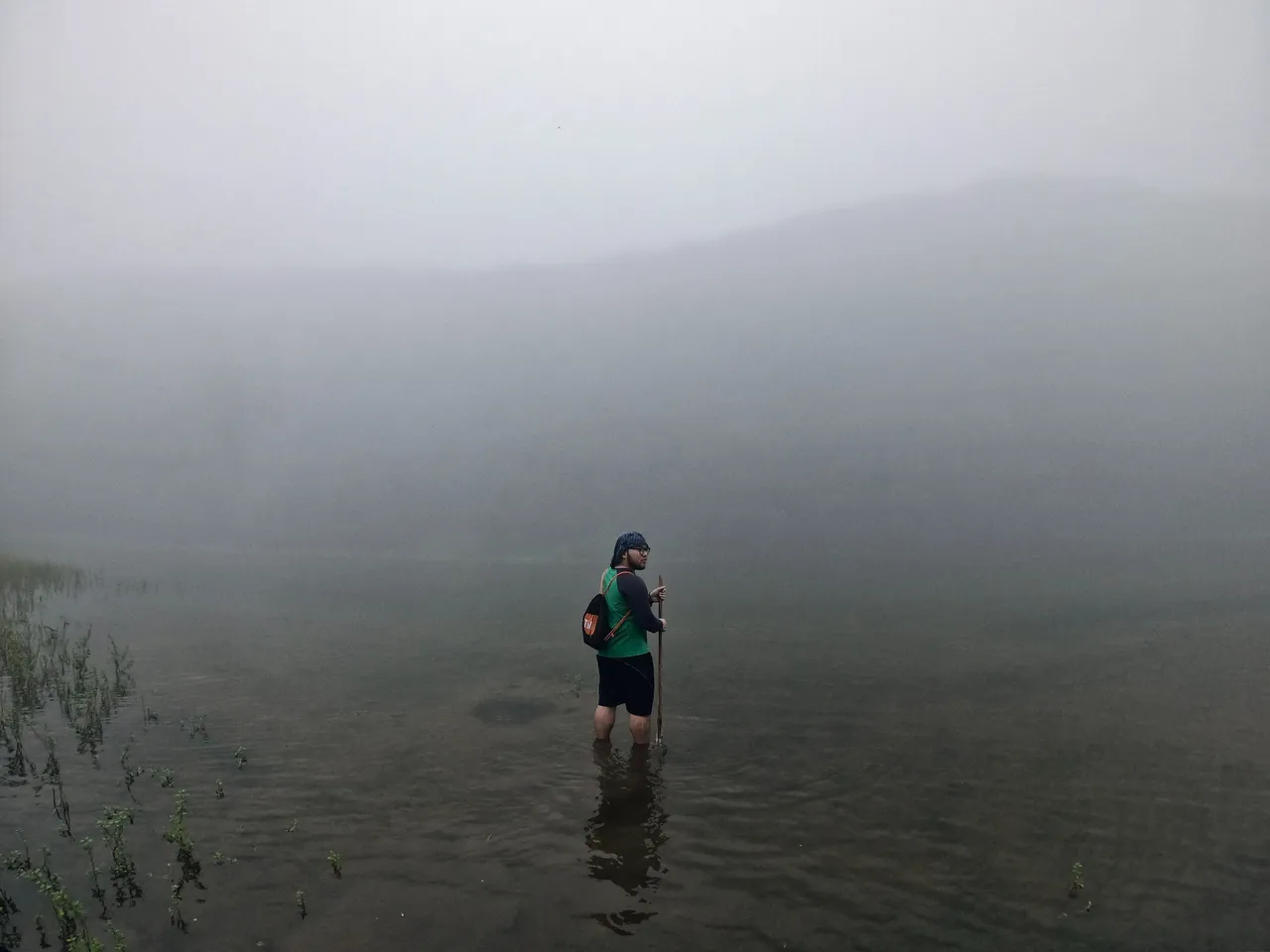
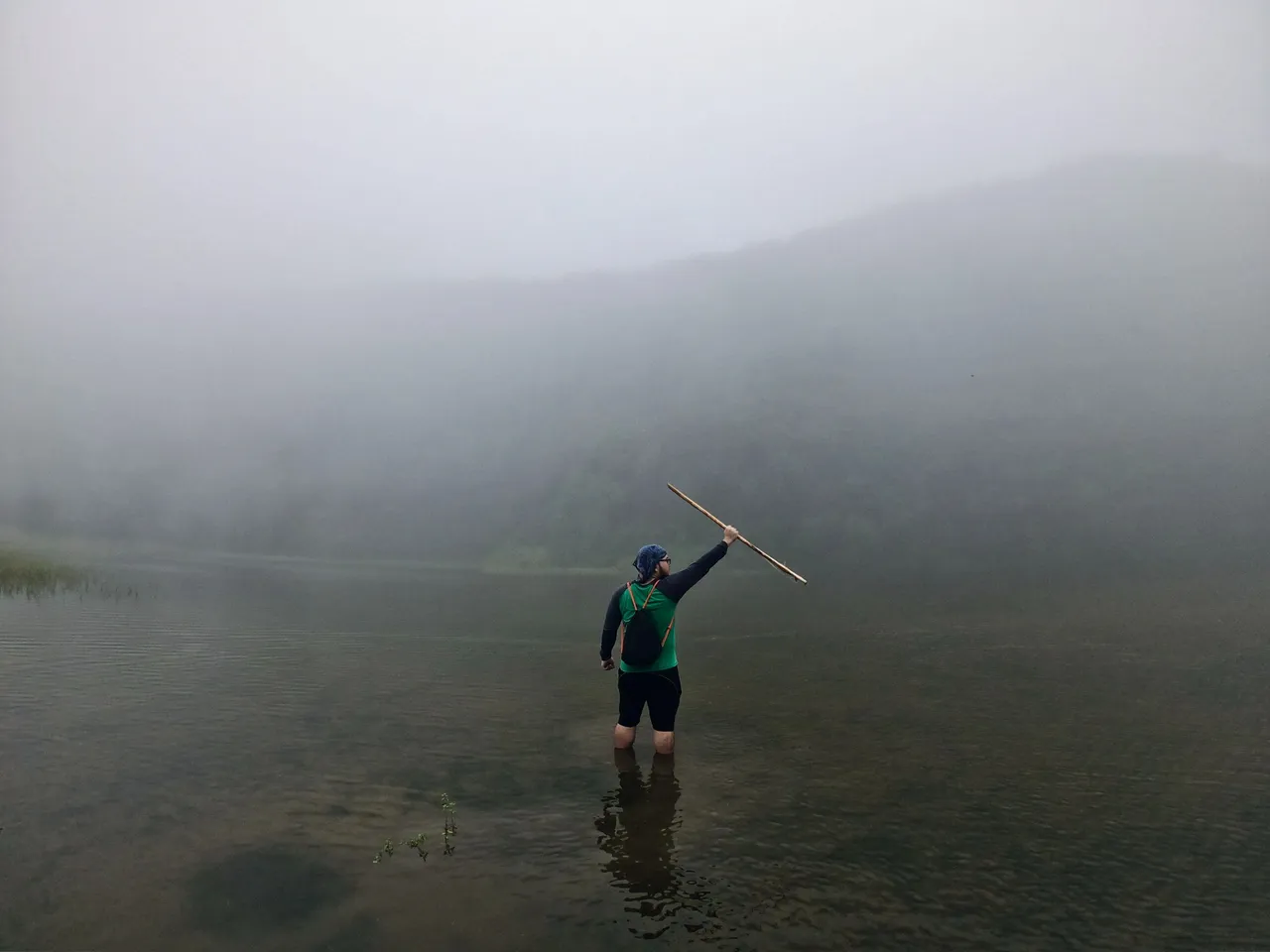
The drizzle stopped as we reached the crater, but the fog created a dramatic effect on our photos. The crater was flat and grassy, with a shallow lake at the other side. We took turns taking pictures standing on the shallow part of the lake. Small fish can also be found in the lake. The lake is kind of eerie and creepy with the fog in the background.
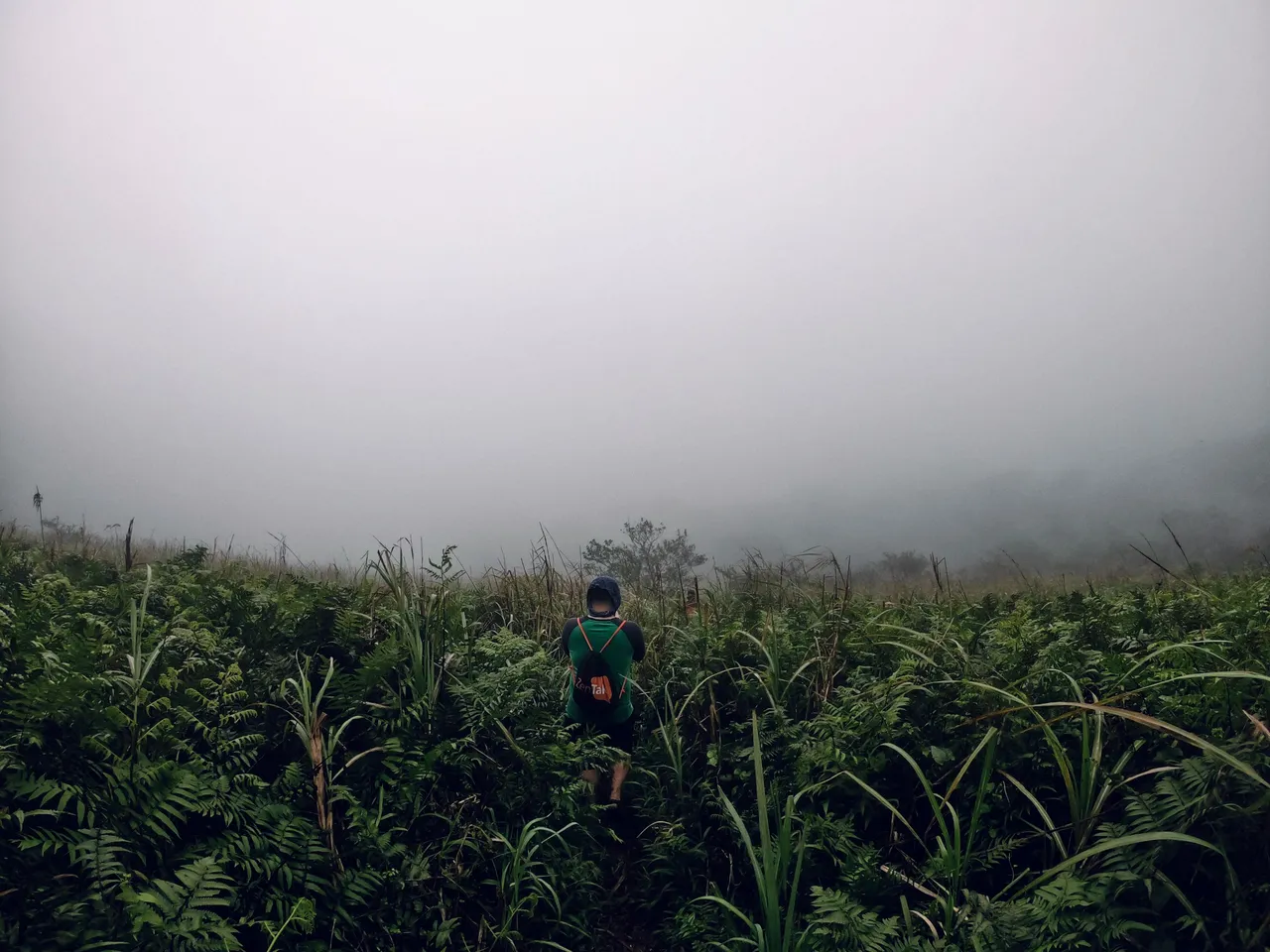
With the thick fog still in the background, we decided to push through to the summit.
The Summit
The summit was not too far from the crater, and we passed into an open trail with bonsai-like trees and shrubs. At this point, the fog still cloaked the surroundings, and we could not see anything above.
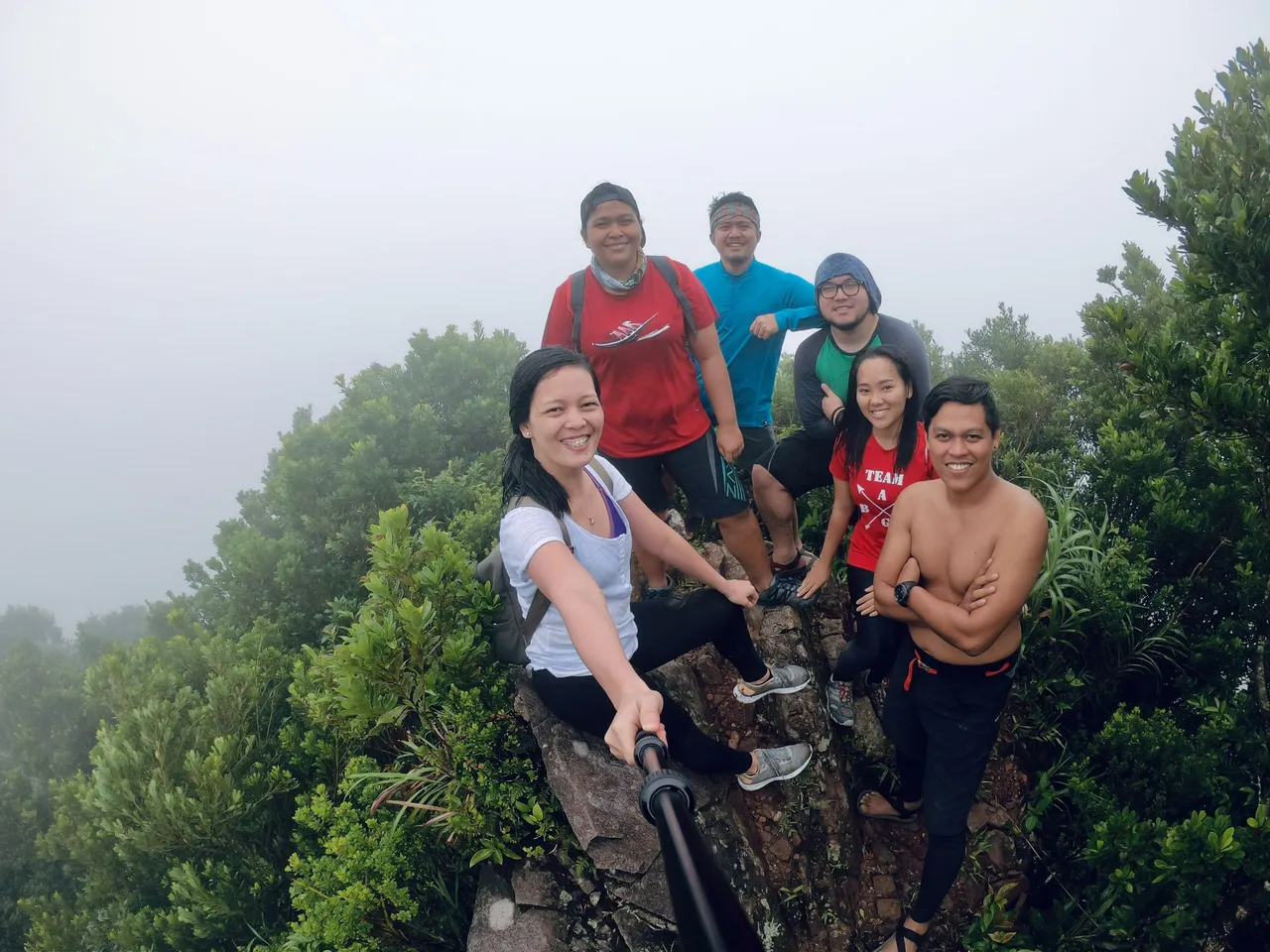

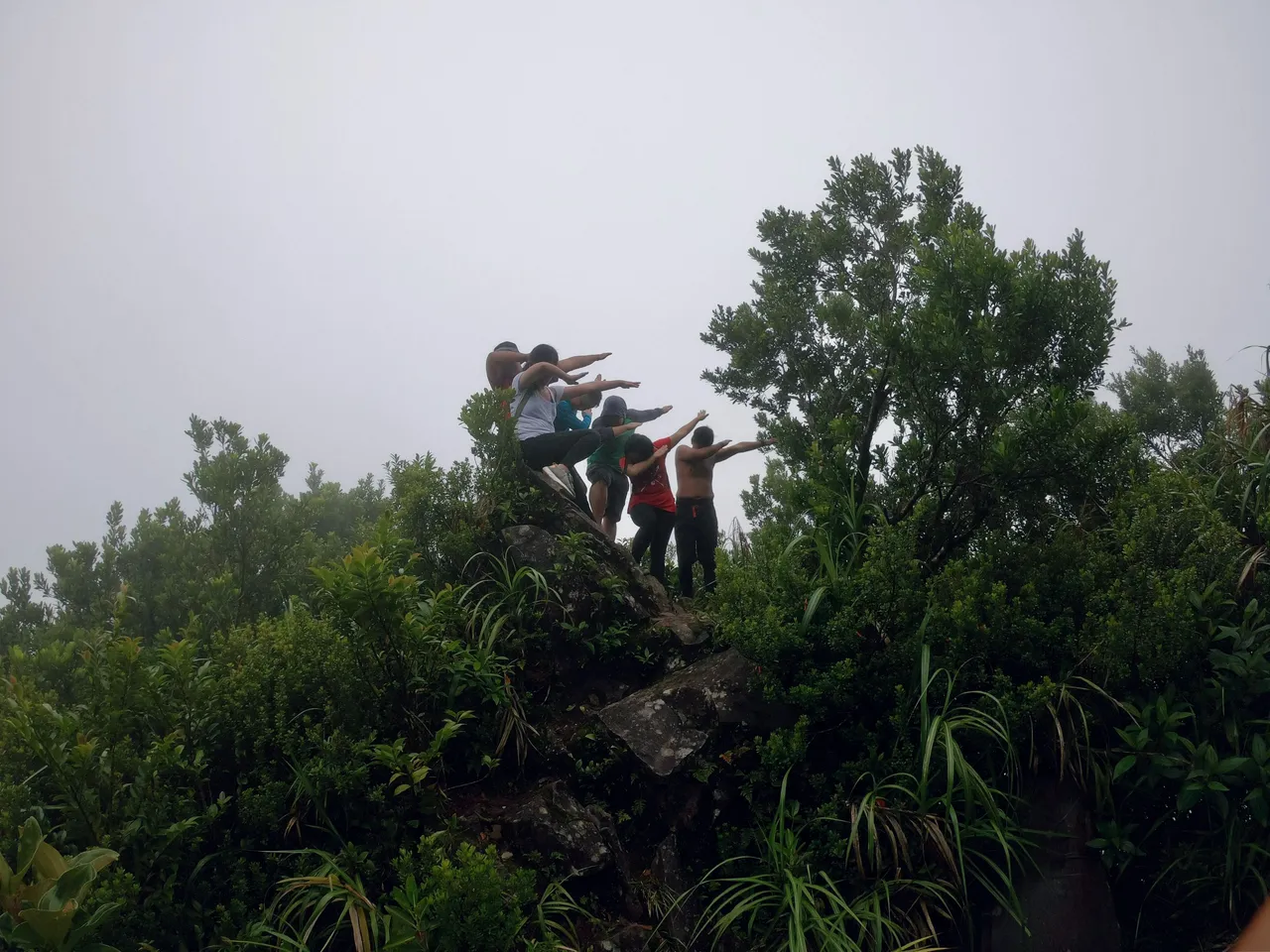
The highest point of 4,370 feet was a clifftop with large rocks where hikers can sit and enjoy the view of Camiguin island and the Bohol Sea. Unfortunately, we were greeted by a white bond paper background. We waited and waited for the clearing, but it did not happen. We took group pictures at the large rock before going down.
The Descent
We descended on the same trail we ascended. It was more challenging going down because of the wet trail, and I was wearing hiking sandals, so it was very struggling.
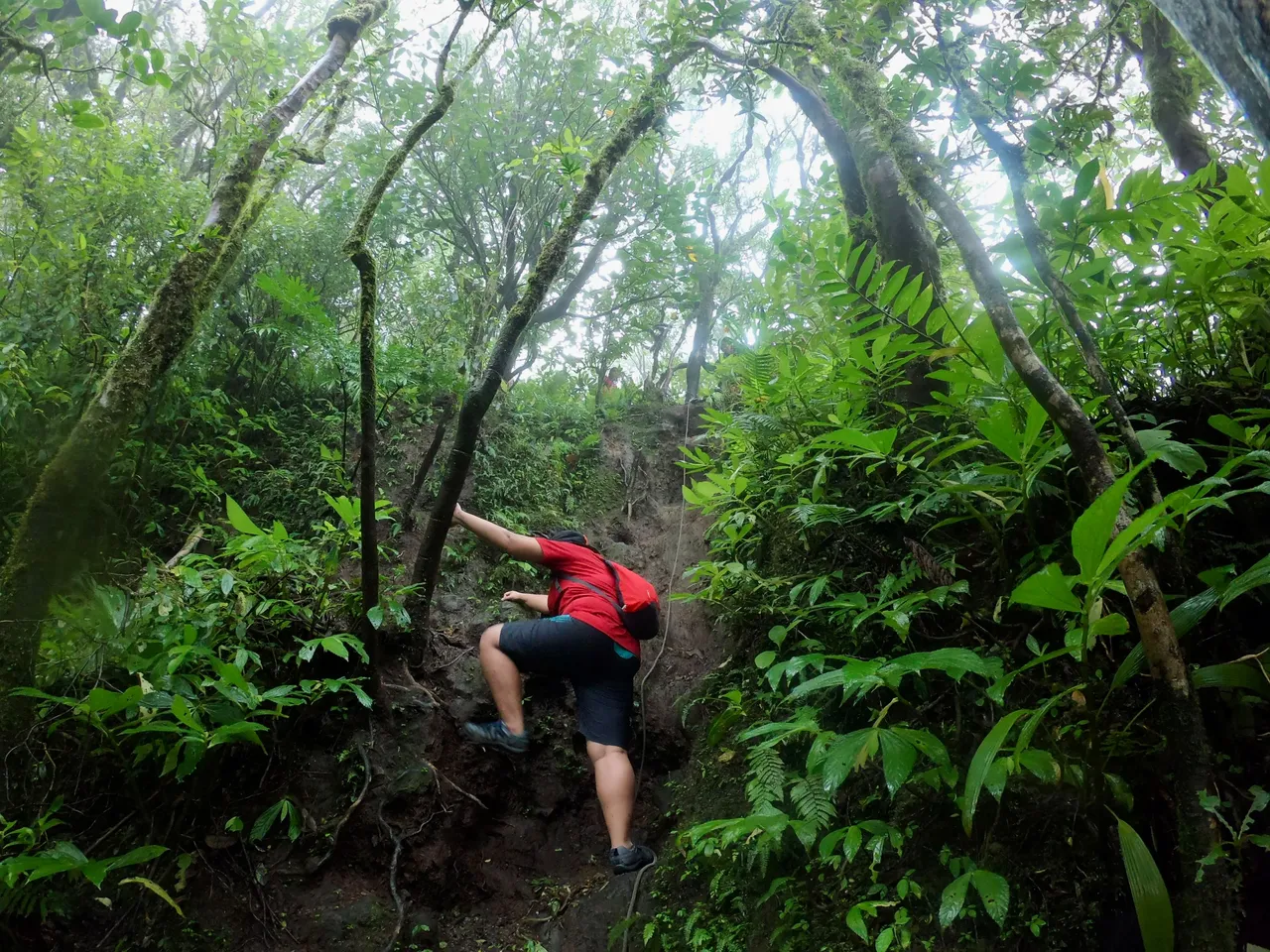
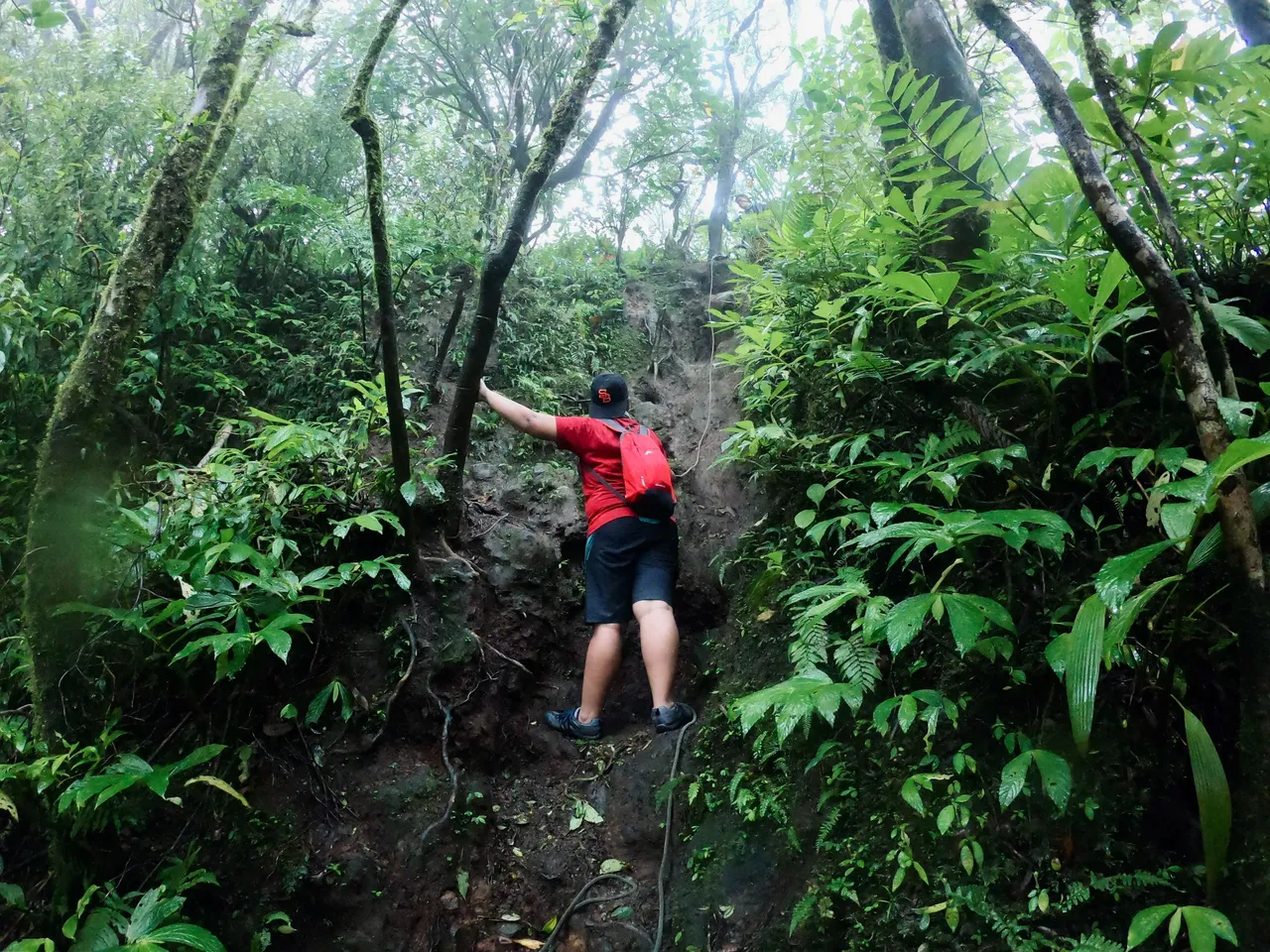
It is advisable to wear shoes and rain jackets, especially when the weather is not good. Our fault was that we underestimated the trail of Mt. Hibok-hibok.
Overall, the climb was supposed to be just a walk in the park for me, but due to the weather, it added a little extra challenge. Due to the active status of the volcano, access to the summit crater is restricted and requires a permit from local authorities. Visitors are advised to take necessary precautions and follow safety guidelines when exploring the crater.
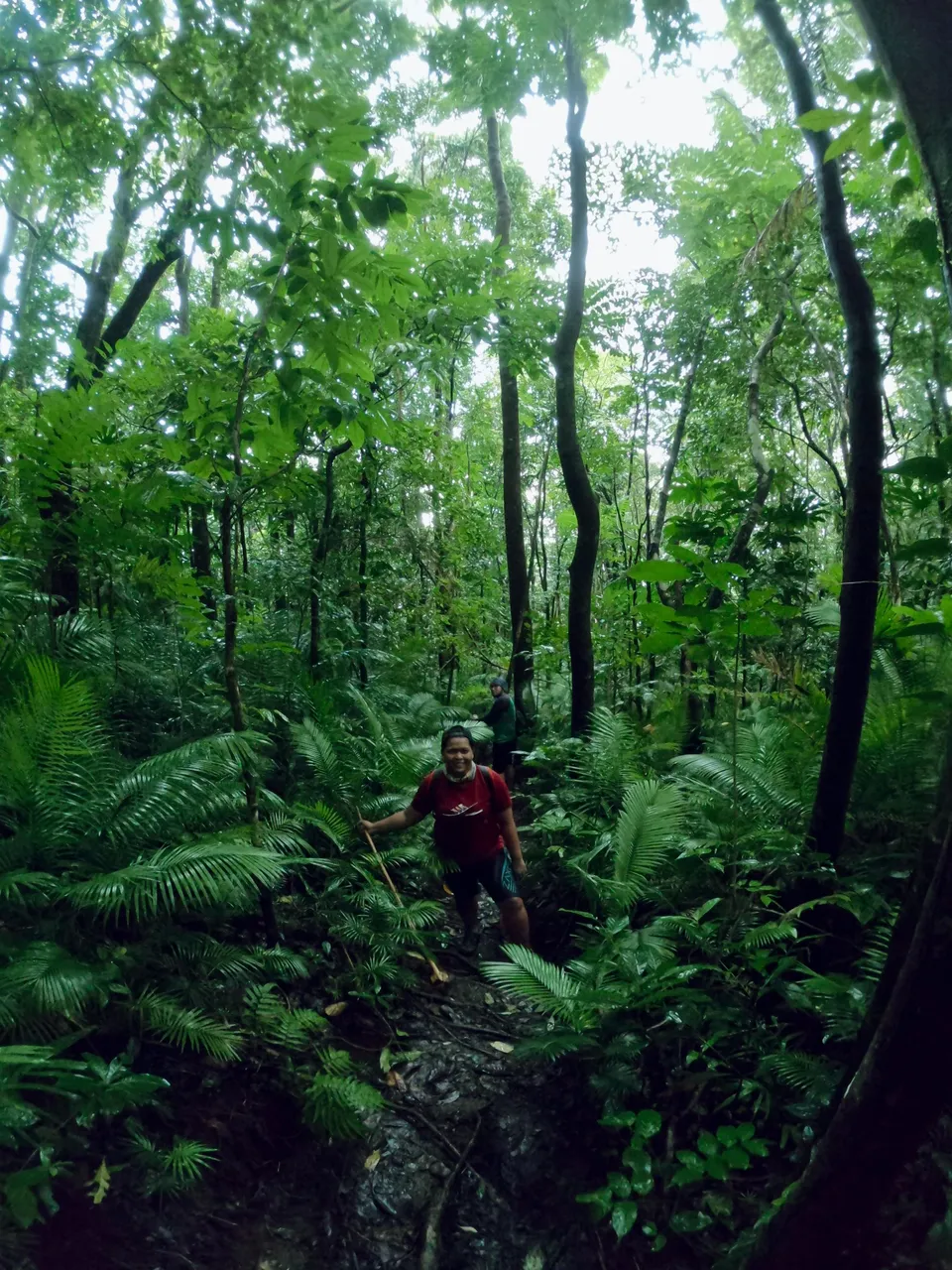
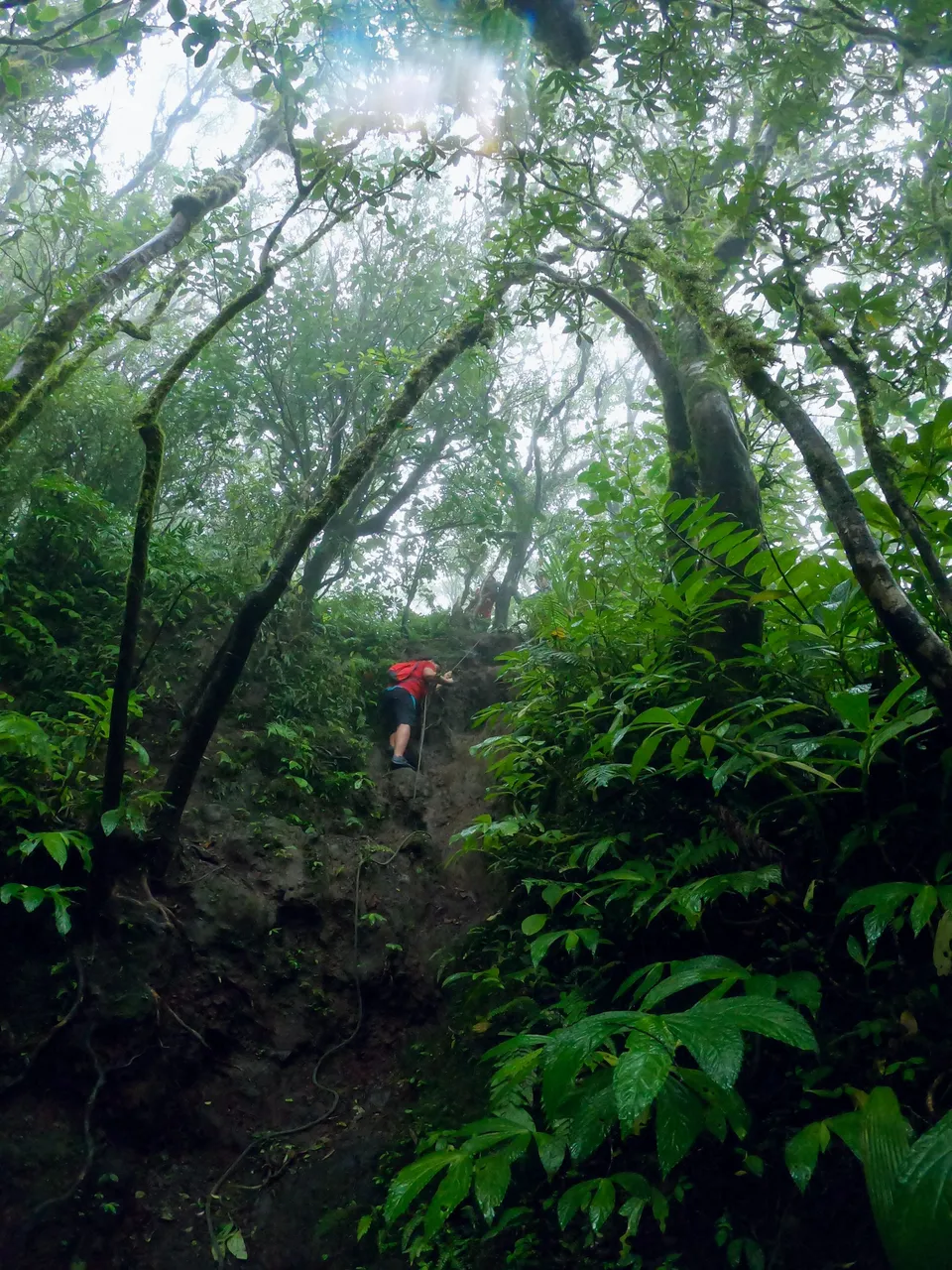
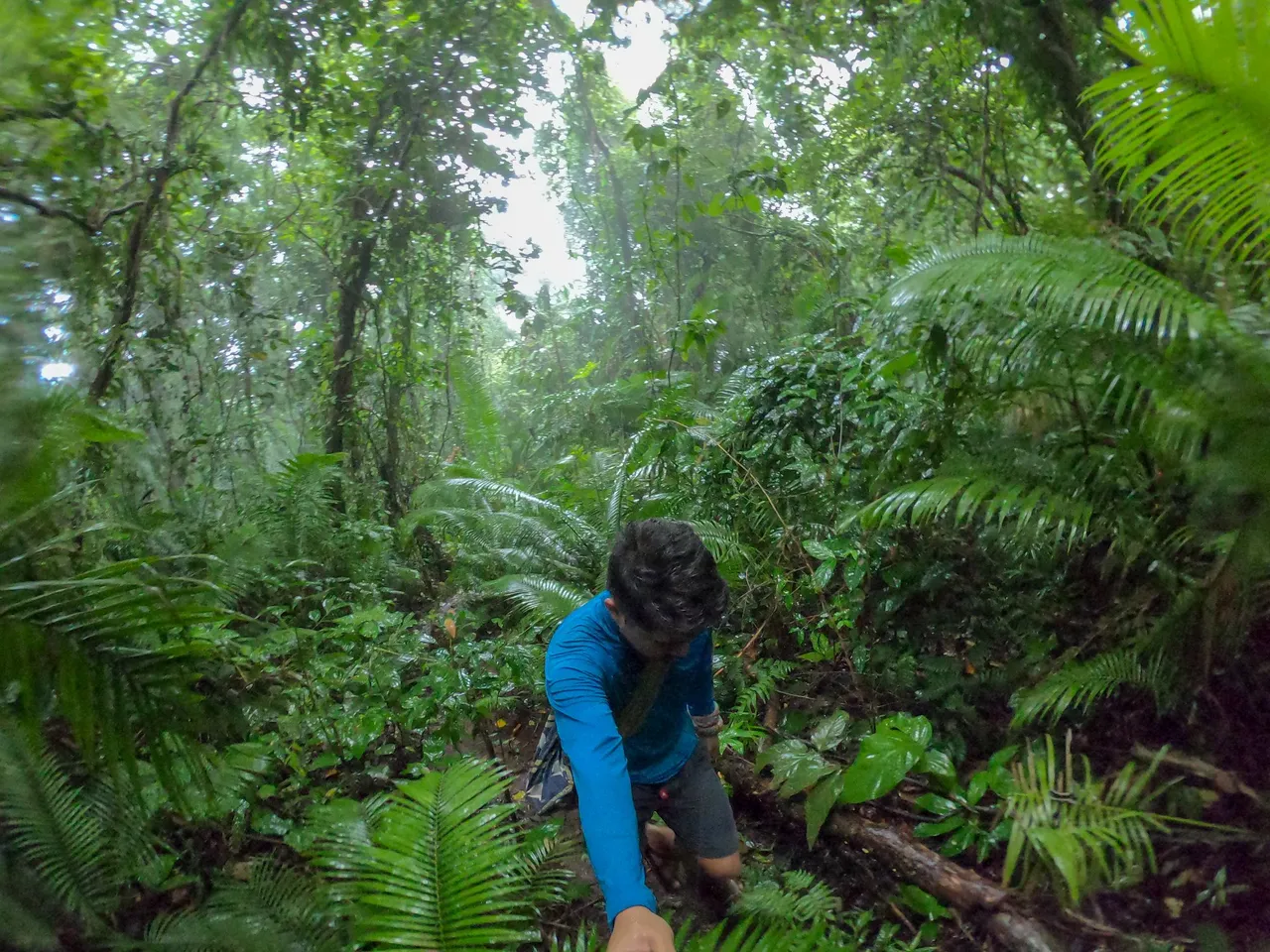
More Adventures to follow
I did not plan on making this trip a 3-part blog; it seems like Camiguin has put a lot of words into me.
After descending, we went to a hot spring near the foot of the mountain where the old trail to the peak was located, The Ardent Spring. We also had the chance to visit the famous Mantigue Island. Mantigue Island is a small, picturesque island located off the coast of Camiguin Island in the southern Philippines. The island is just 4 hectares in size and is surrounded by clear, turquoise waters and powdery white sand beaches. I would love to go back here to explore the island and do snorkeling. More of those adventures on my next blog.
